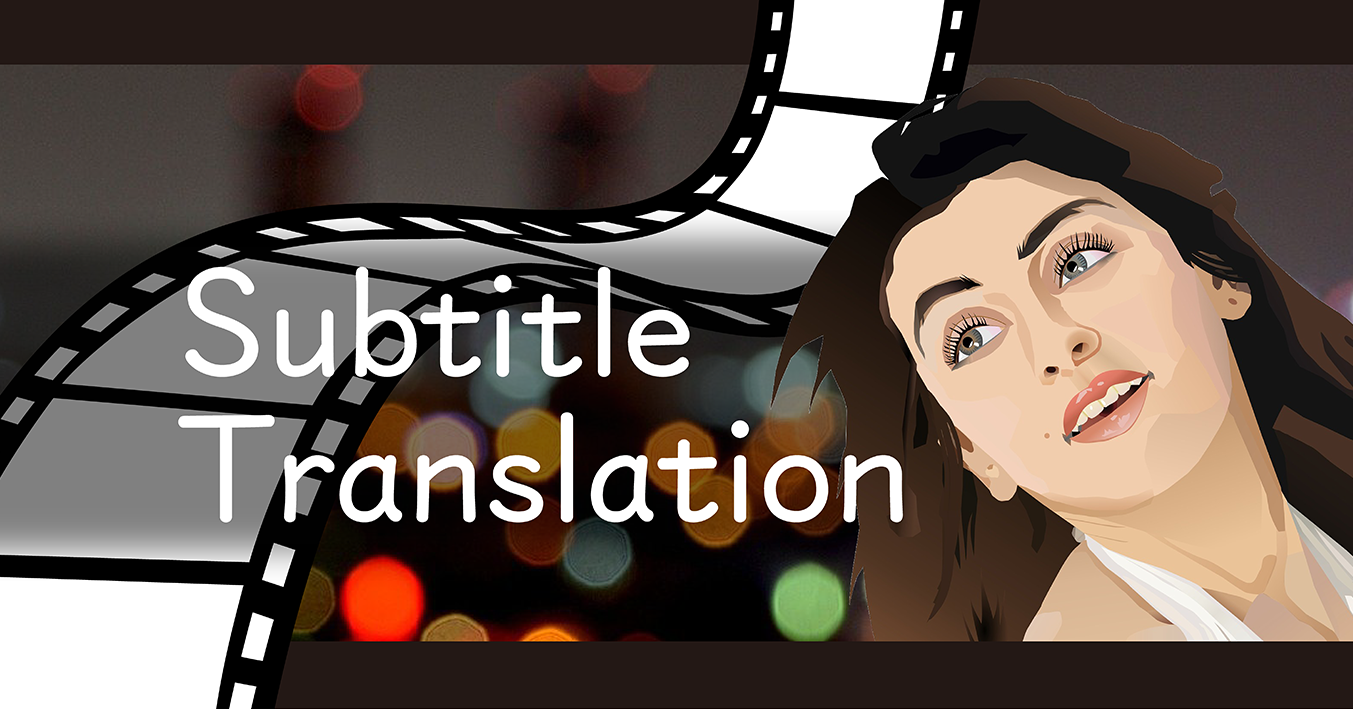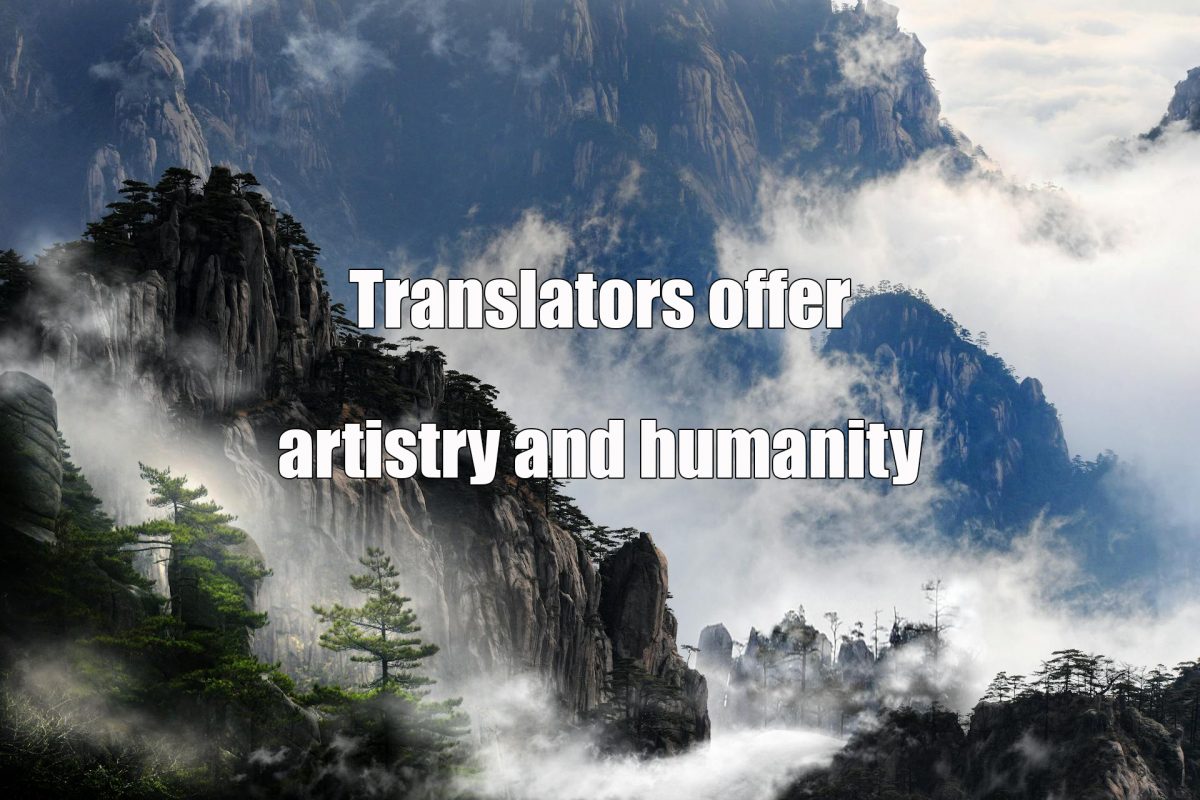
Whether video content is your product, or a way to promote your product, if you’re taking it to Japan you will need to localize it into Japanese. Voice-overs are one solution, but are costly. The simpler solution is subtitles. But there’s plenty of complexity within the simplicity — some of which is common for any language and some that is unique to Japanese.
Contents
Lots to do even before starting the translation
First off, what are you subtitling? Understand that the challenges of subtitling an instructional video and a motion picture are different, as one involves a lot of explaining and the other is more about expressing.
Is the job accompanied by a transcript in the source language? Hopefully so, because if it isn’t, someone would need to listen to the content and generate a transcript to use as the source file, and that’s extra work. But even when a transcript is provided, beware that 100% accuracy is never ensured. Sometimes the client may use a vendor who isn’t familiar with the source content, causing errors to be introduced into the transcript. Even worse, a voice-to-text engine might be used to generate the transcript, in which case you might have to deal with out-of-left-field phrases like “the $0.4 records” where it should’ve been “the four sensor cores,” “B. Byrd” in place of “beeper,” or “collection gauged” instead of “clutch engaged,” testing the translator’s alertness and subject matter expertise.
If the client has any guidelines, such as style guides or term bases, those should be leveraged as well. They will help in maintaining continuity and consistency of subtitles, including tone of voice, whether it’s for a brand or for a character. Subtitles only appear on the screen for a few moments, so it’s important to avoid confusion as much as possible, otherwise the overall understandability of the content could suffer.
The translator should be allowed to watch (this is important) the content while translating from source to target language. Why? One reason is to double-check the accuracy of the transcript. Equally important is that visual information can provide much needed context for the translator. Whether “bike” is translated as バイク (baiku; motorcycle) or 自転車 (jitensha; bicycle) could depend on it.
The challenge of working within the limits
Subtitling into Japanese is always a balancing act between the character limit and the information that needs to be included. The character limit per line of Japanese is typically 13 to 16 characters per line, with up to two lines at a time (although specific limits may vary by content type and client needs). Luckily, Japanese usually requires fewer characters to say the same thing as English, averaging about two Japanese characters per English word, thanks to kanji that carry a lot of information per character. Plus, it is standard convention for Japanese subtitles to forego punctuation marks like periods (。) and commas (、) as they interfere with the flow of text and are in fact relatively recent additions to the Japanese language. But there isn’t a whole lot of wiggle room, so it’s important for translations to be character-efficient.
Unlike videos that can be rewound by the viewer at any time or freeze-framed, subtitles for motion pictures are created assuming there’s only one shot at reading them. So in addition to the usual character limit, there are additional restrictions on display speed, such as four characters per second to ensure readability.
The challenge of addressing cultural differences
Sometimes the thing being mentioned, or the situation itself, is not something that naturally exists in the viewer’s culture. In an instruction video or webinar, additional text may be added for support in such cases, but for TV shows and movies there is no such luxury. Most often the translator needs to use phrasing that conveys the main point most clearly, even if it involves sacrificing peripheral information.
Let’s say we have a character named Joe Rookenbacher in a drama. Although he may be called “Joe” at home, and “Rookenbacher” at the workplace, adding a certain depth to the character, subtitles will most likely use the name ジョー (jō; Joe) throughout. One reason is to make it easier for the audience to link the name with the character, instead of requiring them to remember two names. The other is that ジョー is only three characters long whereas ルッケンバッカー (rukkenbakkā; Rookenbacher) is eight, and the shorter the better.
Humor and sarcasm pose a great challenge as well. Sarcasm isn’t well received in Japan, where it comes across as heavily cynical, or may be taken literally in which case the message gets lost. So when a character says “That’s just great” in English, the Japanese subtitle is likely to read 最悪だ (saiakuda; this is horrible).
Other types of humor are also heavily reliant on cultural context and therefore not readily translatable. Puns are language-specific, so when localizing into Japanese the translator needs to look for something that’s similar in Japanese. In an interview, famous Japanese subtitler and film industry interpreter Natsuko Toda offered an example of how she handled a James Bond movie. Surrounded by dead bodies and no path forward, Bond receives a call from M asking for a status update and replies “It’s a dead end.” This is a colloquialism that does not translate into Japanese, so Toda rendered it as 脈がない (myaku ga nai; no pulse, no possibility) in a stroke of genius.
Sometimes you can’t satisfy them all
There is rarely enough space for a subtitle translation to be literal or totally inclusive, but being too fast and free with them can also result in blowback. The subtitles for The Lord of the Rings sparked a petition drive by Japanese Tolkien fans for being inconsistent with the published Japanese translation of the books, including Frodo’s line “You are not yourself!” being translated as 嘘つき! (usotsuki; liar!) as an oversimplified reaction to Boromir.
Comedies like the Mel Brooks film Spaceballs present an especially difficult challenge for translators, and they worked through it by replacing the gags and puns, or sometimes ignoring them. But one in particular stood out, as the news anchorman announced an upcoming review of the movie “Rocky 5000.” To American audiences this was clearly the 4999th sequel to the original Rocky, but was translated into Japanese as ロッキー5000 レース (rokkī 5000 rēsu; Rocky 5000 race ) in the subtitle. We’ll never know if this was intentional or a simple mistake by a translator who just didn’t “get it.”
Some big lines and how they were translated
The very last line uttered by Vivien Leigh a.k.a. Scarlett O’Hara in Gone with the Wind (1939) was “Tomorrow is another day.” While a literal translation would have been very bland, the translator produced 明日は明日の風が吹く (ashita wa ashita no kaze ga fuku; tomorrow’s wind will blow tomorrow) which really clicks in Japanese because such a phrase pre-exists in the language and it plays on the “wind” theme coming from the title itself.
Casablanca (1942) gave us the iconic “Here’s looking at you, kid.” This would have made no sense in Japanese, but the translator reinvented the line as 君の瞳に乾杯 (kimi no hitomini kanpai; cheers to your eyes) to avoid the problematic “kid” and convey an image of “looking at” somebody.
Two examples of laying it out plainly can be found in The Godfather (1972) and Sudden Impact (1983). Marlon Brando’s line “I’m gonna make him an offer he can’t refuse” was streamlined down to 文句は言わさん (monku wa iwasan; I won’t let him object) which doesn’t have the impact of the English but does get the job done efficiently. Likewise, Clint Eastwood’s “Go ahead, make my day” was made very to-the-point as さぁ撃たせろ (saa utasero; come on, let me shoot you).
In Terminator 2 (1991), Arnold Schwarzenegger fired off his now-famous “I’ll be back.” So, how did they translate it? They didn’t. They transliterated instead, to アイル・ビー・バック (airu bi bakku; I’ll be back). This worked like a charm, as the phrase went viral and boosted recognition of the movie and the entire Terminator franchise in general.
The recap
When subtitling in Japanese for instructional videos, webinars and other training materials, the main focus is accuracy and information. Things need to be clearly stated, so subtitles need to be written to meet those needs. Forego any flowery language and go for straightforward. Prioritization of information may mean the client is okay with a higher character count per line, so be sure to ask.
By contrast, subtitiles for films and TV shows require an additional layer of expressiveness. Creativity and problem-solving skills come into play, all whilst working against the clock. It’s essential to understand which information is crucial to viewer understanding at what point in the story, because you may need to leave something out.
To allow translators to concentrate on the translating task itself, it is incumbent on clients to supply as much guidance and background information as possible. Giving them a leg up on the content and clarifying the stylistic requirements for the job will help lay a clear path for the translator to follow.
And last but not least, look into the latest tools that can help streamline the subtitle translation process. Many Japanese translators rely on software like SSTG1 by CANVASs, Babel or Semdec. But what’s most important is that there is consensus between the client and vendor regarding the tools being used. All of this helps you translate client needs into better final products.
Douglass McGowan







